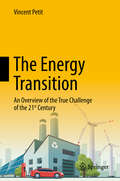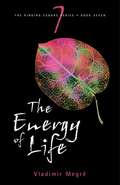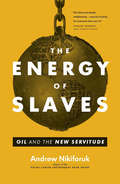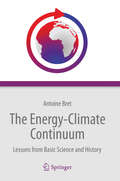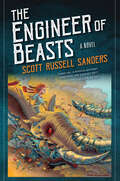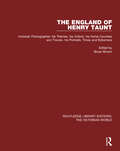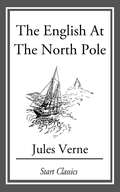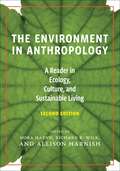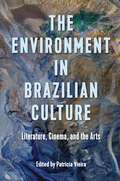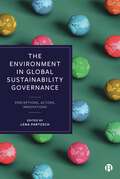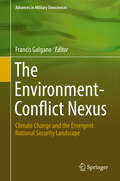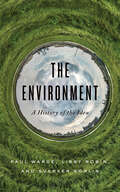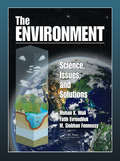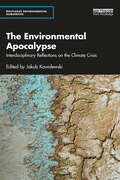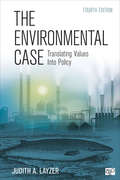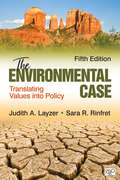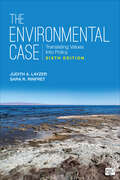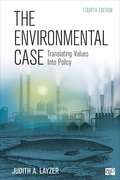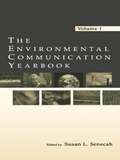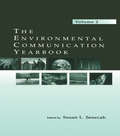- Table View
- List View
The Enduring Wild: A Journey into California's Public Lands
by Josh JacksonA galvanizing road trip across California's immense public wilderness from a beloved adventurer."The Enduring Wild is a call to look beyond the surface, embrace the deep connections that tie us to our public lands, and commit to safeguarding them for future generations." —QT Luong, author of Treasured Lands: A Photographic Odyssey Through America's National ParksIt all began with a camping trip. Outdoor enthusiast Josh Jackson had never heard of "BLM land" before a casual recommendation from a friend led him to a free campsite in the desert—and the revelation that over 15 million acres of land in California are owned collectively by the people. In The Enduring Wild, he takes us on a road trip spanning thousands of miles, crisscrossing the Golden State to seek out every parcel of public wilderness therein belonging to the federal Bureau of Land Management, from the Pacific shores of the King Range down to the Mojave Desert. Over mountains, across prairies, and through sagebrush, Jackson unravels the stories of these lands. He tells of the Indigenous peoples who have called them home for millennia, of the extractivist threats that imperil them today, and of the grassroots organizers and political champions who have rallied to their common defense to uphold the radical mandate to protect these natural treasures for generations to come. For the adventurers, campers, explorers, map readers, road trippers, nature enthusiasts, and public lands lovers out there, The Enduring Wild is an indispensable invitation to know these places more deeply and to embrace our common inheritance. Illustrations by Rebekah Nolan.
The Energy Transition
by Vincent PetitAgainst the backdrop of rapid advances in the energy sector, this book provides a concise overview of the complex challenges in the energy paradigm today, which revolve around the seemingly unsolvable energy equation. The author, an experienced energy professional, combines the various aspects of the energy transition into a single perspective. While highlighting a number of salient problems, he also explores grounds for optimism that these challenges can and will be met. After establishing the historical context, the book presents an analysis of today's energy industry, different energy sources, countries and determinants of energy demand, supplementing all sections with a wealth of global and local data. It subsequently proposes measures to solve the energy equation and a roadmap for a sustainable future, based on more efficient energy use, cleaner energy production and advanced technologies.
The Energy of Life (The Ringing Cedars Series #7)
by Vladimir Megré John Woodsworth Leonid SharashkinMan's life! On what or on whom does it depend? Why do some become emperors or regimental commanders, while others are obliged to fend for scraps at garbage dumps? One opinion holds that each person's fate is pre-determined from birth. That would make Man nothing more than an insignificant cog in some mechanised system, and not the highly organised creation of God.
The Energy of Slaves: Oil and the New Servitude
by Andrew Nikiforuk&“A robustly researched and smoothly written overview of the many challenges confronting our devotion to fossil fuels&” from the author of Tar Sands (Quill & Quire). Ancient civilizations relied on shackled human muscle. It took the energy of slaves to plant crops, clothe emperors, and build cities. Nineteenth-century slaveholders viewed critics as hostilely as oil companies and governments now regard environmentalists. Yet the abolition movement had an invisible ally: coal and oil. As the world&’s most versatile workers, fossil fuels replenished slavery&’s ranks with combustion engines and other labor-saving tools. Since then, cheap oil has transformed politics, economics, science, agriculture, and even our concept of happiness. Many North Americans today live as extravagantly as Caribbean plantation owners. We feel entitled to surplus energy and rationalize inequality, even barbarity, to get it. But endless growth is an illusion. In this provocative book, Andrew Nikiforuk, winner of the Rachel Carson Environment Book Award, argues that what we need is a radical emancipation movement that ends our master-and-slave approach to energy. We must learn to use energy on a moral, just, and truly human scale. Published in Partnership with the David Suzuki Institute &“In his cautionary tale about the evils of oil . . . Nikiforuk makes his case for impending doom if we don&’t mend our energy-spending ways.&” —The Star &“In this cogently argued book, Andrew Nikiforuk deploys a powerful metaphor. Oil dependency, he writes, is a modern form of slavery—and it&’s time for a global abolition movement.&” —Taras Grescoe, author of Shanghai Grand &“A startling critique that should rouse us from our pipe dream of endless plenty.&” —Ronald Wright, author of On Fiji Islands
The Energy-Climate Continuum
by Antoine BretThis book puts the debates about the energy-climate continuum on a scientific ground! It is a must-read for everyone, who wants to understand how intimately the energy and climate debates are linked to each other, and who wants to participate in these omnipresent discussions. Antoine Bret explains in his book how fossil fuels became indispensable for our society. He carefully explains how and why this impacts the earth's climate. And he points out that all available fossil fuels will sooner or later be used up. Therefore, he introduces and discusses the alternatives, which are currently considered. The book is divided into three parts. The first part explains the problem and where we stand today, the second part critically discusses possible elements of solution. The third part illustrates historic case studies, containing both warning as well as encouraging examples of societies at turning points. This book is a careful introduction to these topics. The basic science behind the problem and the debates are introduced in an understandable and nicely readable fashion. Facts are illustrated with simple back-on-the-envelope calculations, providing a good feeling for orders of magnitudes. A rich appendix provides additional background information for the interested readers. In this way, the book can even be a valuable resource for introductory university courses in physics, climate science, natural science and many more subjects. This book is a real conversation starter and can be recommended to everyone, specialist or non-specialist, who wants to understand the actual energy-climate debates and maybe even involve.
The Engineer of Beasts: A Novel
by Scott Russell Sanders“Terrific fantasy . . . Sanders takes readers on a whirlwind tour of a future Earth, where cities are domed for protection against the deadly environment.” —Publishers WeeklyAfter decades of abuse transforms the world into a toxic wasteland, people flee into the safety of a global network of domed cities. Within these safe, orderly spaces, the only animals allowed are machines in the new world’s mechanized zoos, called disneys. Orlando Spinks prides himself on keeping his father’s disney spotless and orderly, until 13-year-old Mooch explodes into his life and down the throat of a mechanized lion.Mooch quickly wriggles her way into Orlando’s heart with her creative mechanical genius, fiery spirit, and passion for real animals. As her rebellious spark spreads to Orlando, they restore the wild spirit to the mechanical beasts, but catch the eye and ire of the Overseers.Beautifully written, The Engineer of Beasts brings together the best of Scott Russell Sanders’s environmental wisdom with skilled world-building and beloved characters.“A keen eye, a sensuous and exact imagination, and a buoyant spirit.” —Ursula K. Le Guin“Sanders’ writing has a polished, literary complexity: images sharply seen, language graceful and well-used, plot-threads spun out, and his cast of characters is wild and wonderful. Thoughtful, patient readers with a taste for satire will enjoy this now-funny, now-tender coming-of-age story.” —Kirkus Reviews“It has a gritty strength and appeal, with humor that tempers the bleakness of the characters’ situations . . . He is a skilled writer well able to challenge and intrigue his readers.” —School Library Journal
The England of Henry Taunt: Victorian Photographer: his Thames. his Oxford. his Home Counties and Travels. his Portraits. Times and Ephemera (Routledge Library Editions: The Victorian World #5)
by Bryan BrownHenry Taunt was one of the great photographers of the nineteenth and early twentieth centuries. He was a master of the camera and possessed of a profoundly creative sense of scene and composition. First published in 1973, this collection of Henry Taunt’s finest work includes artistic prints as well as images which are of importance to architectural and social historians. Sympathetically introduced and captioned by Bryan Brown, this book is a striking visual essay on the Victorian and Edwardian eras and a magnificent record of places and their past.
The English at the North Pole
by Jules VerneThe English at the North Pole was originally published in 1864, being begun even before Verne's Journey to the Center of the Earth. This vigorous Arctic tale was used to found and introduce a "Magazine of Adventure,"which was continued for some years. The book contains an accurate picture of Arctic life and of the Arctic geography known to the world of 1864. The account of the Franklin expedition and of the persistent and heroic search for its relief is carefully studied and complete, only it necessarily fails to include the later investigations of the American expedition under Lieutenant Schwatka. These finally settled the last details of the historic tragedy.
The Environment
by Michael O'Rourke William P. Kabasenche Matthew H. SlaterPhilosophical reflections on the environment began with early philosophers' invocation of a cosmology that mixed natural and supernatural phenomena. Today, the central philosophical problem posed by the environment involves not what it can teach us about ourselves and our place in the cosmic order but rather how we can understand its workings in order to make better decisions about our own conduct regarding it. The resulting inquiry spans different areas of contemporary philosophy, many of which are represented by the fifteen original essays in this volume. The contributors first consider conceptual problems generated by rapid advances in biology and ecology, examining such topics as ecological communities, adaptation, and scientific consensus. The contributors then turn to epistemic and axiological issues, first considering philosophical aspects of environmental decision making and then assessing particular environmental policies (largely relating to climate change), including reparations, remediation, and nuclear power, from a normative perspective.
The Environment in Anthropology, Second Edition: A Reader in Ecology, Culture, and Sustainable Living
by Nora HaennPresents ecology and current environmental studies from an anthropological point of viewThe Environment in Anthropology presents ecology and current environmental studies from an anthropological point of view. From the classics to the most current scholarship, this text connects the theory and practice in environment and anthropology, providing readers with a strong intellectual foundation as well as offering practical tools for solving environmental problems.Haenn, Wilk, and Harnish pose the most urgent questions of environmental protection: How are environmental problems mediated by cultural values? What are the environmental effects of urbanization? When do environmentalists’ goals and actions conflict with those of indigenous peoples? How can we assess the impact of “environmentally correct” businesses? They also cover the fundamental topics of population growth, large scale development, biodiversity conservation, sustainable environmental management, indigenous groups, consumption, and globalization.This revised edition addresses new topics such as water, toxic waste, neoliberalism, environmental history, environmental activism, and REDD (Reducing Emissions from Deforestation and Forest Degradation), and it situates anthropology in the multi-disciplinary field of environmental research. It also offers readers a guide for developing their own plan for environmental action. This volume offers an introduction to the breadth of ecological and environmental anthropology as well as to its historical trends and current developments. Balancing landmark essays with cutting-edge scholarship, bridging theory and practice, and offering suggestions for further reading and new directions for research, The Environment in Anthropology continues to provide the ideal introduction to a burgeoning field.
The Environment in Brazilian Culture: Literature, Cinema, and the Arts
by Patricia VieiraExamining Brazilian artists’ engagement with the natural world from 1900 to the present The Environment in Brazilian Culture explores the centrality of the natural world in shaping Brazilian literature, cinema, and art since 1900. This collection, exceptional in its representation of material from diverse locations and cultures within Brazil, as well as in its investigation of a range of artistic mediums and genres, portrays the human connection to nature in the most biodiverse country in the world. From the forests of the Amazon to the mountains of the Serra do Mar, this volume examines Brazilian depictions of different geographical regions and the plants and animals found in each. Contributors pay particular attention to the environment’s integral place in Indigenous identity and art. They also discuss artistic references to environmental devastation, underscoring the connection between ecological degradation and contemporary socioeconomic inequality. Works discussed in these chapters include novels by Itamar Vieira Junior and Maria José Silveira, poetry by Marília Floôr Kosby, Guarani and Bororo verbal arts, Huni Kuĩ documentary films, and paintings by Candido Portinari.These wide-ranging analyses highlight the value of Brazilian cultural production to critical plant and animal studies, posthumanism, and the environmental humanities. And, in grappling with Brazil’s extractivist past, they search for alternatives to a predatory approach to the land and its inhabitants, looking for pathways to environmental justice in the Anthropocene. Contributors: Victoria Saramago | Leila Lehnen | Rex P. Nielson | Maria Esther Maciel | Valeria Meiller | Benjamin Burt | Juliana Luna Freire | Nuno Marques | Cinthya Torres | Jens Andermann | Malcolm K. McNee | Patricia Isabel Lontro Marder Vieira | Martiniano Alcantara Neto
The Environment in Global Sustainability Governance: Perceptions, Actors, Innovations
by Lena PartzschAvailable Open Access digitally under CC-BY-NC-ND licence. With Agenda 2030, the UN adopted wide-ranging Sustainable Development Goals (SDGs) that integrate development and environmental agendas. This book focuses on the political tensions between the environmental objectives and socio-economic aspects of sustainable development. The collection provides an introduction to interlinkages, synergies and trade-offs between the ‘green’ and other goals, such as gender equality and economic growth. It also considers related goals on cities and partnerships as crucial for implementing environmentally sound sustainability. Identifying governance failures and responsibilities, it advocates for a shift towards cooperative economics and politics for the common good.
The Environment-Conflict Nexus: Climate Change and the Emergent National Security Landscape (Advances in Military Geosciences)
by Francis GalganoThe aim of this book is to demonstrate how environmental factors have caused an evolution in the landscape of national security since the end of the Cold War. Through relevant case studies, the scope of the problem on the national security landscape due to environmental stressors is illuminated, examined, and synthesized with climate-related data. Human variables such as governance, GDP, and vulnerability are taken into account, and are compared against environmental factors to more accurately determine the causative agents of regional conflicts which threaten national security. These case studies comprise the majority of the text, and they show how individual conflicts are uniquely influenced by environmental stress with variations from situation to situation. This book will be of interest to government and military professionals, and may serve as a resource for college courses in the areas of military geography, international affairs, and sustainability studies.
The Environment: A History of the Idea
by Paul Warde Libby Robin Sverker SörlinAn in-depth look at the history of the environment.Is it possible for the economy to grow without the environment being destroyed? Will our lifestyles impoverish the planet for our children and grandchildren? Is the world sick? Can it be healed? Less than a lifetime ago, these questions would have made no sense. This was not because our ancestors had no impact on nature—nor because they were unaware of the serious damage they had done. What people lacked was an idea: a way of imagining the web of interconnection and consequence of which the natural world is made. Without this notion, we didn't have a way to describe the scale and scope of human impact upon nature. This idea was "the environment." In this fascinating book, Paul Warde, Libby Robin, and Sverker Sörlin trace the emergence of the concept of the environment following World War II, a period characterized by both hope for a new global order and fear of humans' capacity for almost limitless destruction. It was at this moment that a new idea and a new narrative about the planet-wide impact of people's behavior emerged, closely allied to anxieties for the future. Now we had a vocabulary for talking about how we were changing nature: resource exhaustion and energy, biodiversity, pollution, and—eventually—climate change.With the rise of "the environment," the authors argue, came new expertise, making certain kinds of knowledge crucial to understanding the future of our planet. The untold history of how people came to conceive, to manage, and to dispute environmental crisis, The Environment is essential reading for anyone who wants to help protect the environment from the numerous threats it faces today.
The Environment: Science, Issues, and Solutions
by Mohan K. Wali M. Siobhan Fennessy Fatih EvrendilekStrongly grounded in the scientific method and evidence, The Environment: Science, Issues, and Solutions presents an organized, accessible, building block approach that introduces the principles of ecology. This book examines the effects of technology use and the unprecedented economic growth and development that has tipped the natural balance of the environment, resulting in serious local, regional, and global environmental problems. This comprehensive text explores the need for interrelated long-term solutions for the prevention and mitigation of environmental problems.
The Environmental Apocalypse: Interdisciplinary Reflections on the Climate Crisis (Routledge Environmental Humanities)
by Jakub KowalewskiThis volume brings together scholars working in diverse traditions of the humanities in order to offer a comprehensive analysis of the environmental catastrophe as the modern-day apocalypse. Drawing on philosophy, theology, history, literature, art history, psychoanalysis, as well as queer and decolonial theories, the authors included in this book expound the meaning of the climate apocalypse, reveal its presence in our everyday experiences, and examine its impact on our intellectual, imaginative, and moral practices. Importantly, the chapters show that eco-apocalypticism can inform progressively transformative discourses about climate change. In so doing, they demonstrate the fruitfulness of understanding the environmental catastrophe from within an apocalyptic framework, carving a much-needed path between two unsatisfactory approaches to the climate disaster: first, the conservative impulse to preserve the status quo responsible for today’s crisis, and second, the reckless acceptance of the destructive effects of climate change. This book will be an invaluable resource for students and scholars interested in the contributions of both apocalypticism and the humanities to contemporary ecological debates.
The Environmental Case: Translating Values Into Policy
by Judith A. LayzerAnswers to environmental issues are not black and white. Debates around policy are often among those with fundamentally different values, and the way that problems and solutions are defined plays a central role in shaping how those values are translated into policy. The Environmental Case captures the real-world complexity of creating environmental policy, and this much-anticipated Fourth Edition contains fifteen carefully constructed cases. Through her analysis, Editor Judith Layzer systematically explores the background, players, contributing factors, and outcomes of each case, and gives readers insight into some of the most interesting and controversial issues in U.S. environmental policymaking.
The Environmental Case: Translating Values Into Policy
by Judith A. LayzerAnswers to environmental issues are not black and white. Debates around policy are often among those with fundamentally different values, and the way that problems and solutions are defined plays a central role in shaping how those values are translated into policy. The Environmental Case captures the real-world complexity of creating environmental policy, and this much-anticipated Fourth Edition contains fifteen carefully constructed cases. Through her analysis, Editor Judith Layzer systematically explores the background, players, contributing factors, and outcomes of each case, and gives readers insight into some of the most interesting and controversial issues in U.S. environmental policymaking.
The Environmental Case: Translating Values Into Policy
by Judith A. Layzer Sara R. RinfretAnswers to environmental issues are not black and white. Debates around policy are often among those with fundamentally different values, and the way that problems and solutions are defined plays a central role in shaping how those values are translated into policy. The Environmental Case captures the real-world complexity of creating environmental policy, and this much-anticipated Fifth Edition contains fifteen carefully constructed cases. Through her analysis, Sara Rinfret explores the background, players, contributing factors, and outcomes of each case, and gives readers insight into some of the most interesting and controversial issues in U.S. environmental policymaking.
The Environmental Case: Translating Values Into Policy
by Judith A. Layzer Sara R. RinfretAnswers to environmental issues are not black and white. Debates around policy are often among those with fundamentally different values, and the way that problems and solutions are defined plays a central role in shaping how those values are translated into policy. The Environmental Case captures the real-world complexity of creating environmental policy, and this much-anticipated Fifth Edition contains fifteen carefully constructed cases. Through her analysis, Sara Rinfret explores the background, players, contributing factors, and outcomes of each case, and gives readers insight into some of the most interesting and controversial issues in U.S. environmental policymaking.
The Environmental Case: Translating Values Into Policy
by Judith A. Layzer Sara R. RinfretAnswers to environmental issues are not black and white. Debates around policy are often among those with fundamentally different values, and the way that problems and solutions are defined plays a central role in shaping how those values are translated into policy. The Environmental Case captures the real-world complexity of creating environmental policy, and this much-anticipated Sixth Edition contains 14 carefully constructed cases, including a new study of the Salton Sea crisis. Through her analysis, Sara Rinfret continues the work of Judith Layzer and explores the background, players, contributing factors, and outcomes of each case, and gives readers insight into some of the most interesting and controversial issues in U.S. environmental policymaking.
The Environmental Case: Translating Values Into Policy
by Judith A. Layzer Sara R. RinfretAnswers to environmental issues are not black and white. Debates around policy are often among those with fundamentally different values, and the way that problems and solutions are defined plays a central role in shaping how those values are translated into policy. The Environmental Case captures the real-world complexity of creating environmental policy, and this much-anticipated Sixth Edition contains 14 carefully constructed cases, including a new study of the Salton Sea crisis. Through her analysis, Sara Rinfret continues the work of Judith Layzer and explores the background, players, contributing factors, and outcomes of each case, and gives readers insight into some of the most interesting and controversial issues in U.S. environmental policymaking.
The Environmental Case: Translating Values into Policy, Fourth Edition
by Judith A. LayzerThrough its 15 carefully constructed cases, the book gives readers a first-hand look at some of the most interesting landmark and illuminating new controversies in U. S. environmental policy making. In her new section "New Issues, New Politics," Layzer adds two brand new cases: The Deepwater Horizon Disaster: The High Cost of Offshore Oil; and Fracking Wars: Local and State Responses to Unconventional Shale Gas Development. Lazyer provides maps, tables, figures, questions to consider, recommended readings, and useful websites to help students think critically about environmental policy and to facilitate further research.
The Environmental Communication Yearbook: Volume 1
by Susan L. SenecahEditorial ScopeThe Environmental Communication Yearbook is a multidisciplinary forum through which a broad audience of academics, professionals, and practitioners can share and build theoretical, critical, and applied scholarship addressing environmental communication in a variety of contexts. This peer-reviewed annual publication invites submissions that showcase and/or advance our understanding of the production, reception, contexts, or processes of human communication regarding environmental issues. Theoretical expositions, literature reviews, case studies, cultural and mass media studies, best practices, and essays on emerging issues are welcome, as are both qualitative and quantitative methodologies. Areas of topical coverage will include:*participatory processes: public participation, collaborative decision making, dispute resolution, consensus building processes, regulatory negotiations, community dialogue, building civic capacity;*journalism and mass communications: newspaper, magazine, book and other forms of printed mass media; advertising and public relations; media studies; and radio, television, and Internet broadcasting; and*communication studies: rhetorical/historical case studies, organizational analyses, public relations/issues management, interpersonal/relational dimensions, risk communication, and psychological/cognitive research, all of which examine the origins, content, structure, and outcomes of discourse about environmental issues. Submissions are accepted on an ongoing basis for inclusion in volumes published annually. AudienceResearchers, scholars, students and practitioners in environmental communication, journalism, rhetoric, public relations, mass communication, risk analysis, political science, environmental education, environmental studies, public administrations; policymakers; others interested in environmental issues and the communication channels used for discourse and information dissemination on the topic.For more information and guidelines for submissions, visit www.erlbaum.com/ecy.htm.
The Environmental Communication Yearbook: Volume 2
by Susan L. SenecahEditorial ScopeThe Environmental Communication Yearbook is a multidisciplinary forum through which a broad audience of academics, professionals, and practitioners can share and build theoretical, critical, and applied scholarship addressing environmental communication in a variety of contexts. This peer-reviewed annual publication invites submissions that showcase and/or advance our understanding of the production, reception, contexts, or processes of human communication regarding environmental issues. Theoretical expositions, literature reviews, case studies, cultural and mass media studies, best practices, and essays on emerging issues are welcome, as are both qualitative and quantitative methodologies. Areas of topical coverage will include:*participatory processes: public participation, collaborative decision making, dispute resolution, consensus building processes, regulatory negotiations, community dialogue, building civic capacity;*journalism and mass communications: newspaper, magazine, book and other forms of printed mass media; advertising and public relations; media studies; and radio, television, and Internet broadcasting; and*communication studies: rhetorical/historical case studies, organizational analyses, public relations/issues management, interpersonal/relational dimensions, risk communication, and psychological/cognitive research, all of which examine the origins, content, structure, and outcomes of discourse about environmental issues. Submissions are accepted on an ongoing basis for inclusion in volumes published annually. AudienceResearchers, scholars, students and practitioners in environmental communication, journalism, rhetoric, public relations, mass communication, risk analysis, political science, environmental education, environmental studies, public administrations; policymakers; others interested in environmental issues and the communication channels used for discourse and information dissemination on the topic.For more information and guidelines for submissions, visit www.erlbaum.com/ecy.htm.

